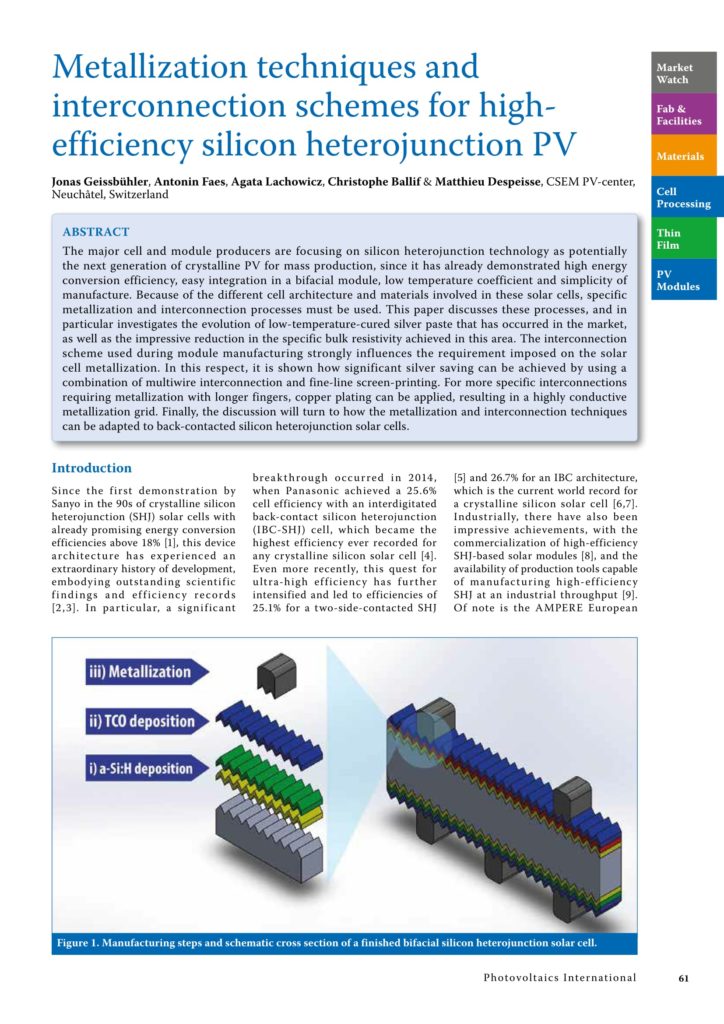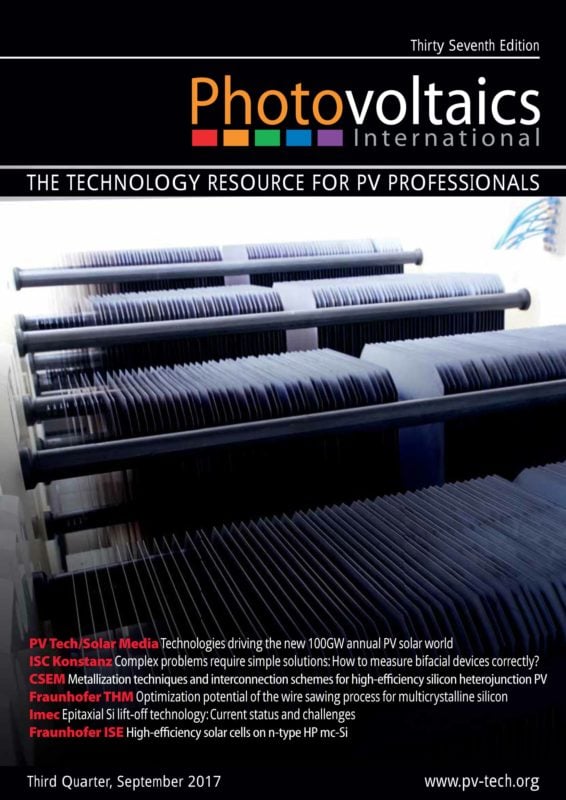By Jonas Geissbühler, received his Ph.D. in 2015 from EPFL, Switzerland, with a thesis topic of high-efficiency silicon heterojunction solar cells. He joined the CSEM PV-center in 2016, where his research interests include the metallization of silicon heterojunction solar cells, inkjet printing and high-efficiency silicon heterojunction solar cells.; Antonin Faes, received his Ph.D. in 2006 for his work on solid oxide fuel cells at the Interdisciplinary Center for Electron Microscopy (CIME) and the Industrial Energy System Laboratory (LENI) at EPFL.; Agata Lachowicz, studied chemistry at Heinrich Heine University Düsseldorf and worked initially on processes for printed circuit boards, followed by development of etching and plating processes for solar cells at Schott Solar and optimization of PERC cells at Meyer Burger Germany.; Christophe Ballif, received his Ph.D. from EPFL, Switzerland, in 1998. In 2004 he became a full professor with the Institute of Microengineering at the University of Neuchâtel, where he directs the Photovoltaics and Thin-Film Electronics Laboratory, which is now part of EPFL.; Matthieu Despeisse, received his Ph.D. in 2006 for his work on advanced detectors at CERN in Geneva, Switzerland. He then joined EPFL in 2009 as head of the thin-film silicon photovoltaics research team.
Since the first demonstration by Sanyo in the 90s of crystalline silicon heterojunction (SHJ) solar cells with already promising energy conversion efficiencies above 18%, this device architecture has experienced an extraordinary history of development, embodying outstanding scientific findings and efficiency records.



